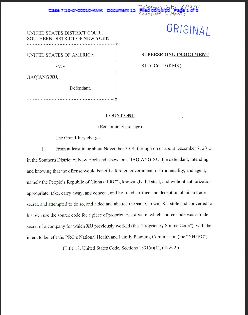In a recent blog post, ZDNet explains how cyber-security firm McAfee uncovered a cyber-espionage campaign that’s been going on for five years against more than 70 public and private organizations in 14 countries. The campaign, called “Operation Shady RAT”, was described by Dmitri Alperovitch, McAfee’s VP of threat research in a recent blog post: Revealed: Operation Shady RAT. According to Alperovitch, these attacks are major assaults against both countries and corporations.
Alperovitch writes, “I am convinced that every company in every conceivable industry with significant size and valuable intellectual property and trade secrets has been compromised (or will be shortly), with the great majority of the victims rarely discovering the intrusion or its impact. In fact, I divide the entire set of Fortune Global 2000 firms into two categories: those that know they've been compromised and those that don't yet know. "
Alperovitch also declares that "the targeted compromises–known as 'Advanced Persistent Threats (APTs) … present a far greater threat to companies and governments, as the adversary is tenaciously persistent in achieving their objectives. The key to these intrusions is that the adversary is motivated by a massive hunger for secrets and intellectual property; this is different from the immediate financial gratification that drives much of cybercrime, another serious but more manageable threat." Alperovitch notes that
Additionally, "What we have witnessed over the past five to six years has been nothing short of a historically unprecedented transfer of wealth – closely guarded national secrets (including from classified government networks), source code, bug databases, email archives, negotiation plans and exploration details for new oil and gas field auctions, document stores, legal contracts, SCADA [supervisory control and data acquisition] configurations, design schematics and much more has ‘fallen off the truck’ of numerous, mostly Western companies and disappeared in the ever-growing electronic archives of dogged adversaries.”
The actual attack method was a spear-phishing email sent to individuals with the right level of access at the company. The e-mail contained an exploit that, when opened on an unpatched system, triggered a download of the implant malware. That malware executed and initiated a backdoor communication channel to the Command & Control web server which allowed live intruders to jump on to the infected machine.
McAfee’s study shows that numerous U.S. government agencies were successfully attacked. In addition, Canada, South Korea, Vietnam, the United Nations, and India were hacked. Numerous electronics and defense companies have also fallen victim.
ShadyRAT's targets by category:
You can read the McAfee blog post here.
You can read the ZDNet blog post here.
***

Leave a Reply